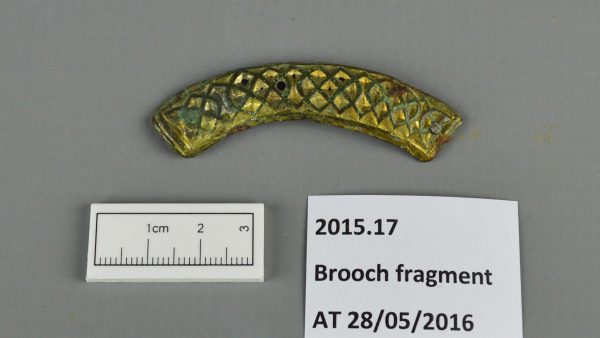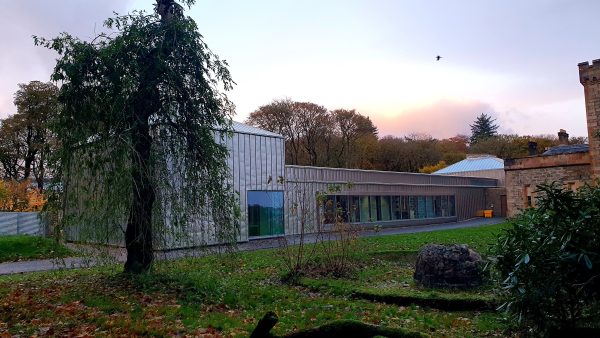
Harris Tweed: an islands story
How the homespun yarn of the Outer Hebrides became a global success

Harris Tweed is the only textile in the world to be protected by its own Act of Parliament. All genuine Harris Tweed must, by definition, be handwoven by islanders at their homes in the Outer Hebrides in order to receive the Orb stamp of authenticity.
The Harris Tweed industry was, and is, highly important to the economy and culture of the islands. It is estimated that, at the industry’s peak, fifty per cent of islanders were involved in tweed production, using the income to supplement their crofting livelihoods. An article written c.1920 claims that at least three quarters of crofters and cottars were at that time engaged in the manufacture of ‘this beautiful cloth.’

The islanders of Lewis, Harris, Uist and Barra had always been skilled in weaving tweed for their own needs, but it was a chance event which brought the quality of this cloth to the attention of a wider public. In 1846, Lady Dunmore, the widow of the Earl of Dunmore, who owned Harris, had the family clan tartan replicated by Harris weavers in tweed. The results proved so successful that she began to promote and market the homespun tweed. Lady Dunmore and other aristocratic patrons would hold annual exhibitions and sales to highlight the merits of Harris Tweed amongst their wealthy friends, thereby creating an external market and demand. Sales of the cloth continued to grow during the later 19th century.
Need for protection of the cloth and the Orb trademark
By the beginning of the 20th century the profile of Harris Tweed had risen to such a level that imitations were appearing. This led to the creation of the Harris Tweed Association in 1909. Founding members included Mary Stewart-Mackenzie and the Duchess of Sutherland as well as individuals from the Outer Hebrides and England. The Association’s role was to hold a trade mark to protect genuine Harris Tweed, to establish a system for authenticating the cloth, and to promote the product. The Harris Tweed Orb trade mark was registered in 1910 and began to be stamped onto the cloth in 1911.
Further change came in 1993 with the Harris Tweed Act which created the Harris Tweed Authority as the successor to the Association. The Act protects Harris Tweed legally rather than relying on trade mark law. The HTA remains the guardian of the Harris Tweed Orb trade mark today and also acts as an ambassador for the industry.

The introduction of mills
The original trade mark definition for Harris Tweed described it as an entirely handmade product. In the early part of the 20th century however, mills began to operate in the islands. Initally these were carding and dyeing mills but they soon began to provide spinning machinery as well. As more weavers got their wool carded and spun in mills, the amount that qualified for stamping as genuine Harris Tweed diminished. This led the HT Association to amend the regulations in 1934 to include tweed that had been made with mill-spun yarn.

Legal definition of Harris Tweed
By the 1950s another problem arose – that of wool being spun on the mainland, or in some cases all processes apart from the weaving being carried out off-island. This resulted in two court cases in the early 1960s, of which the Court of Session case in Edinburgh was arguably the more significant. Taking place from 1961-64, it was the largest court case in Scotland at the time, and lead to Lord Hunter’s judgement in 1964 that in order to be called Harris Tweed, all the processes used in its production had to be carried out in the Outer Hebrides.
Today, wool is dyed, carded and spun in mills, before being sent to weavers who weave the yarn into tweed using manual looms in their own homes. The tweed is then transferred back to the mill for finishing, before being stamped with the Orb mark by an HTA representative to prove its authenticity.

Loom innovation
Harris Tweed manufacture peaked in the 1960s, and experienced various rises and falls in popularity thereafter. By the 1980s it was clear that the industry required some form of new loom, as the Hattersley looms, in use since around 1920, were reaching the end of their working life. The development of the new double-width Bonas Griffiths loom occurred from the late 1980s to the mid-1990s, and it is now the loom used by the majority of weavers.
A cottage industry with a global reach
In the 21st century Harris Tweed has enjoyed a return to popularity and its unique qualities are paraded on catwalks and admired by fashion aficionados across the globe.

Harris Tweed in the collections
As you would expect, this important industry is strongly represented in both our archive and museum collections. Tasglann nan Eilean holds the Harris Tweed Authority archive collection, which documents the development of the industry. Other archive material relating to Harris Tweed is found in the James Shaw Grant, Gösta Sandberg and Harris Tweed Weaving Project collections to name a few. Museum nan Eilean also has a substantial Harris Tweed collection, including tweed cloth samples, trade stamps, labels and fashion items. The museum also manages the Angus MacLeod Calbost Collection on behalf of the Calbost Trust, which is strong on Harris Tweed material. Many of the Comainn Eachdraidh across the islands from Barra to Ness hold tweed objects in their collections, including looms, cloth samples, shuttles and pattern books.
More on the Harris Tweed story…
To find out more about the remarkable story of Harris Tweed and view further images from our collections, have a look at both the Outer Hebrides and Orkney museums’ online exhibitions, created during lockdown for the Between Islands Project.




